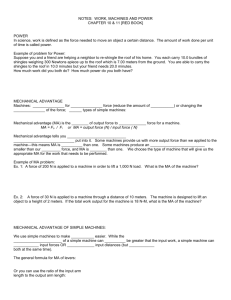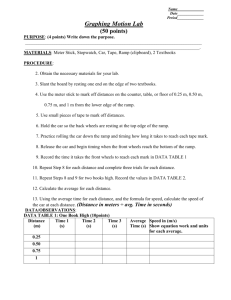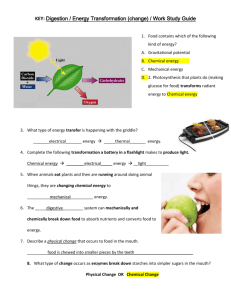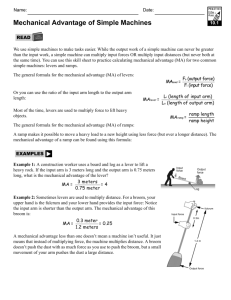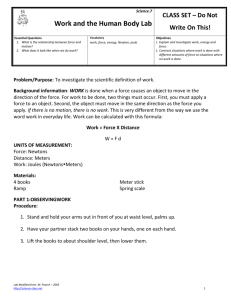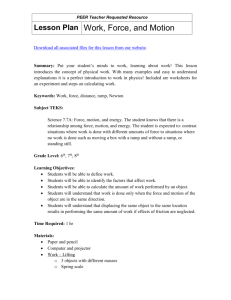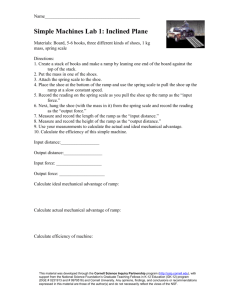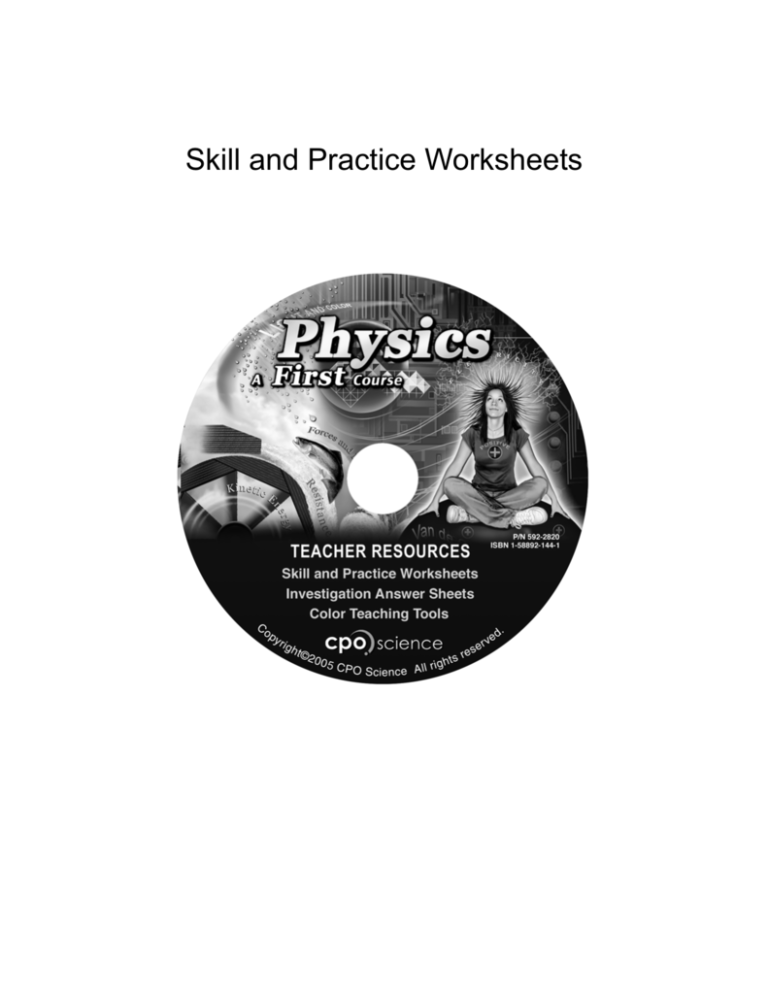
Skill and Practice Worksheets
Physics A First Course
Skill and Practice Worksheets
Credits
CPO Science Curriculum Development Team
Author: Thomas Hsu, Ph.D.
Vice Presidents: Thomas Narro and Lynda Pennell
Writers: Scott Eddleman, Mary Beth Hughes, Stacy Kissel, Lainie Ives, Erik Benton,
Mary Ann Erikson, and Patsy DeCoster
Graphic Artists: Polly Crisman, Bruce Holloway, and Jim Travers
Curriculum Contributors
David Bliss, Manos Chaniotakis, and James Sammons
Technical Consultants
Tracy Morrow and Julie Dalton
Physics A First Course
Teacher Resource CD-ROM
Copyright
2005 CPO Science
ISBN 1-58892-144-1
1 2 3 4 5 6 7 8 9 - QWE - 09 08 07 06 05
All rights reserved. No part of this work may be reproduced or transmitted in any form or by an
means, electronic or mechanical, including photocopying and recording, or by any information
store or retrieval system, without permission in writing. For permission and other rights under
this copyright, please contact:
CPO Science
26 Howley Street,
Peabody, MA 01960
(800) 932-5227
http://www.cposcience.com
Printed and Bound in the United States of America
Name:
Date:
Mechanical Advantage of Simple Machines
4.2
We use simple machines to make tasks easier. While the output work of a simple machine can never be greater
than the input work, a simple machine can multiply input forces OR multiply input distances (but never both at
the same time). You can use this skill sheet to practice calculating mechanical advantage (MA) for two common
simple machines: levers and ramps.
The general formula for the mechanical advantage (MA) of levers:
MAlever =
Or you can use the ratio of the input arm length to the output arm
length:
MAlever =
Fo (output force)
Fi (input force)
Li (length of input arm)
Lo (length of output arm)
Most of the time, levers are used to multiply force to lift heavy objects.
The general formula for the mechanical advantage (MA) of ramps:
MAramp =
A ramp makes it possible to move a heavy load to a new height using less force (but
over a longer distance). The mechanical advantage of a ramp can be found using this formula:
Example 1: A construction worker uses a board and log as a lever to lift a
heavy rock. If the input arm is 3 meters long and the output arm is 0.75 meters
long, what is the mechanical advantage of the lever?
3 meters
MA =
=4
0.75 meter
Example 2: Sometimes levers are used to multiply distance. For a broom, your
upper hand is the fulcrum and your lower hand provides the input force: Notice
the input arm is shorter than the output arm. The mechanical advantage of this
broom is:
MA =
0.3 meter
= 0.25
1.2 meters
A mechanical advantage less than one doesn’t mean a machine isn’t useful. It just
means that instead of multiplying force, the machine multiplies distance. A broom
doesn’t push the dust with as much force as you use to push the broom, but a small
movement of your arm pushes the dust a large distance.
ramp length
ramp height
Page 2 of 3
Example 3: A 500-newton cart is lifted to a height of 1 meter
using a 10-meter long ramp. You can see that the worker only has
to use 50 newtons of force to pull the cart. You can figure the
mechanical advantage in either of these two ways:
MAramp =
4.2
ramp length
10 meters
=
= 10
ramp height
1 meter
Or using the standard formula for mechanical advantage:
MA =
output force
500 newtons
=
= 10
input force
50 newtons
Lever problems
1.
A lever used to lift a heavy box has an input arm of 4 meters and an output arm of 0.8 meters. What is the
mechanical advantage of the lever?
2.
What is the mechanical advantage of a lever that has an input arm of 3 meters and an output arm of 2 meters?
3.
A lever with an input arm of 2 meters has a mechanical advantage of 4. What is the output arm’s length?
4.
A lever with an output arm of 0.8 meter has a mechanical advantage of 6. What is the length of the input
arm?
5.
A rake is held so that its input arm is 0.4 meters and its output arm is 1.0 meters. What is the mechanical
advantage of the rake?
6.
A broom with an input arm length of 0.4 meters has a mechanical advantage of 0.5. What is the length of the
output arm?
7.
A child’s toy rake is held so that its output arm is 0.75 meters. If the mechanical advantage is 0.33, what is
the input arm length?
Page 3 of 3
Ramp problems
8.
A 5-meter ramp lifts objects to a height of 0.75 meters. What is the mechanical advantage of the ramp?
9.
A 10-meter long ramp has a mechanical advantage of 5. What is the height of the ramp?
4.2
10. A ramp with a mechanical advantage of 8 lifts objects to a height of 1.5 meters. How long is the ramp?
11. A child makes a ramp to push his toy dump truck up to his sandbox. If he uses 5 newtons of force to push the
12-newton truck up the ramp, what is the mechanical advantage of his ramp?
12. A ramp with a mechanical advantage of 6 is used to move a 36-newton load. What input force is needed to
push the load up the ramp?
13. Gina wheels her wheelchair up a ramp using a force of 80 newtons. If the ramp has a mechanical advantage
of 7, what is the output force (in newtons)?
14. Challenge! A mover uses a ramp to pull a 1000-newton cart up to the floor of his truck (0.8 meters high). If
it takes a force of 200 newtons to pull the cart, what is the length of the ramp?

